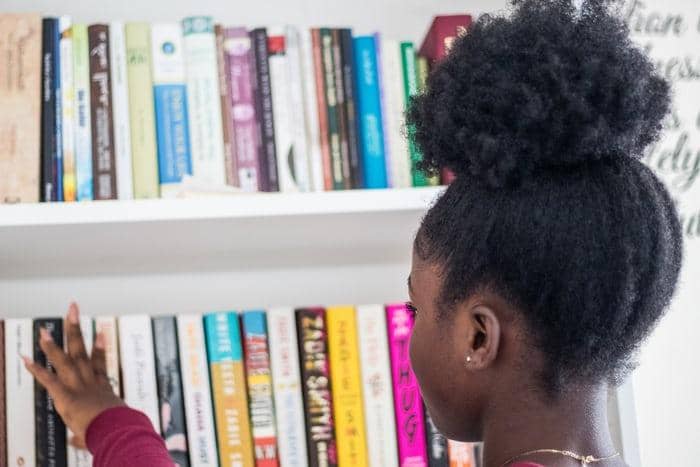Reading to Learn While Learning To Read
High-Quality Informational Text Lessons for All Young Readers

Since the beginning of the common core, the classrooms have been flooded with informational texts. Although this is positive, there are also reasons to be cautious, particularly when we consider the use of texts in the years of K-2 “learning to read.” Does the informational text have a place in primary grades? How can we maximize the potential of informational texts for younger learners?
The informational text has a lot of ideas and opportunities around the world, and it’s undoubtedly necessary from the start. When considering the informational text experience opportunities, we need to focus on our focus, format, and text type. Some opportunities for informational text within primary classrooms are:
- Interactive read-aloud focuses on building listening comprehension skills and is typically in the whole class format, using the above-grade-text level.
- Independent reading: this focuses on building independence and stamina, nurturing reading enjoyment and developing content knowledge. It uses the individual format and is done with texts that students can read sufficiently.
- Shared reading: this focuses on modeling, interacting and demonstrating with text. It is typically in the whole class and using the grade-text level.
How do we go from relying on several levels of text to relying mainly on differentiating instructions within the grade-level texts? Planning is crucial, and to plan our lessons, these are some questions we need to consider.
Step 1: Preparing for the reading

- Do the students possess any background knowledge about this topic?
- What vocabulary and concepts do I need to elicit from the students or develop through reading instructions?
- What is the purpose of the reading (the main information I want the students to learn), and how to state this for them?
- How can I create excitement in my students to read by engaging them in previewing the text (using illustrations, cover, or other features)?
Step 2: Guide the reading
- What concepts or vocabulary should be taught while reading to help the students understand the text? What illustrations and text features need to be used to make the text more accessible?
- Given the importance of the ideas behind the text I want the students to read, what strategies can I model or teach that work appropriately for this text?
- What are the different ways that I can moderate this text for different classes of students? Examples:
- Group 1: students working on decoding. What decoding strategies and phonetic elements should I teach or review to access the text? How can I use passages and words from the text for their decoding and model other passages aloud?
- Group 2: students decoding accurately and working on fluency. How can I model the characteristics of fluent reading using this text? Can I follow up on this reading in unison and share reading to practice fluency? Is there another way for the students to use this text to build their fluency (assisted reading with partner reading, audio, choral reading)?
- Group 3: students reading with accuracy and fluency at grade level or above. How can I consolidate their skill using this text and focus on creating deeper comprehension? How can I follow this reading up with challenge text experiences?
- How can I use the guided reading with strategy instruction and comprehension skills appropriate to the text with all the students?
Step 3: Follow up on the initial reading

- What is the embedded strategy or skill that was used during the initial reading that I can return to revisit and emphasize explicitly?
- How can I check for the level of student understanding? What reteaching do I need to do if they don’t show any understanding?
Step 4: facilitate connections
- Does the experience with the text lend itself automatically to creating connections in technology, writing, content areas, additional reading, or fine arts?
- How can I develop a meaningful follow-up activity that can help the students to make these connections?
Conclusion
According to professional writer of Best Essays, as it clearly states, this model seeks to emphasize the use of instructional planning and delivery instead of simply picking a book “level.” Also, although the examples focus on the use of informational text, the concept of differentiating instructions within standard texts applies to fiction. As we are considering the rise and growth of information text across all the grades, giving specific attention to how it looks is important in K-2. It’s incredibly important that all children get to read to learn while learning to read. High-quality informational text lessons will make this happen.
FAQ
What is the importance of learning to read at an early age?
Learning to read early is crucial as it forms the foundation for academic success, communication, and lifelong learning.
What are the key developmental stages in learning to read?
Learning to read typically progresses through stages such as phonemic awareness, phonics, fluency, vocabulary, and comprehension.
How can parents support their child’s journey in learning to read?
Parents can support reading development by reading aloud to their child, creating a literacy-rich environment, and engaging in interactive reading activities.
What are effective reading strategies for improving reading comprehension?
Strategies like summarization, questioning, and making connections help improve reading comprehension skills.
What role does phonics instruction play in learning to read?
Phonics instruction teaches the relationship between letters and sounds, which is essential for decoding words while reading.
How can schools and teachers promote a love for reading among students?
Schools can foster a love for reading through book clubs, reading challenges, and creating a positive reading culture.
What are the benefits of using technology and digital resources for learning to read?
Digital tools and apps can provide interactive and engaging reading experiences, enhancing literacy skills.
How can struggling readers receive extra support and intervention in schools?
Schools offer specialized reading programs and interventions to help struggling readers catch up and succeed.
What are some common challenges faced by adults learning to read for the first time?
Adult learners may face challenges related to self-esteem, prior education, and motivation, but tailored programs can address these obstacles.
How does literacy impact personal and professional development?
Literacy is a foundational skill that opens doors to educational and career opportunities, enabling individuals to lead fulfilling lives.
Improve your Marketing with the Power of AI
See how you can start with AI Marketing and reach your goals faster than ever before. Check out the Tips, Strategies, AI Tools, Masterclass, Courses, and Community. Unleash the true potential of your brand with the help of AI.